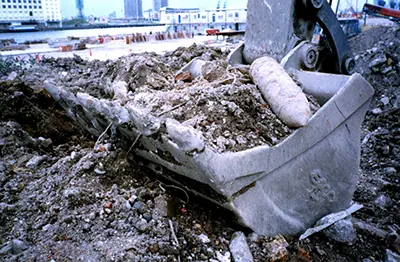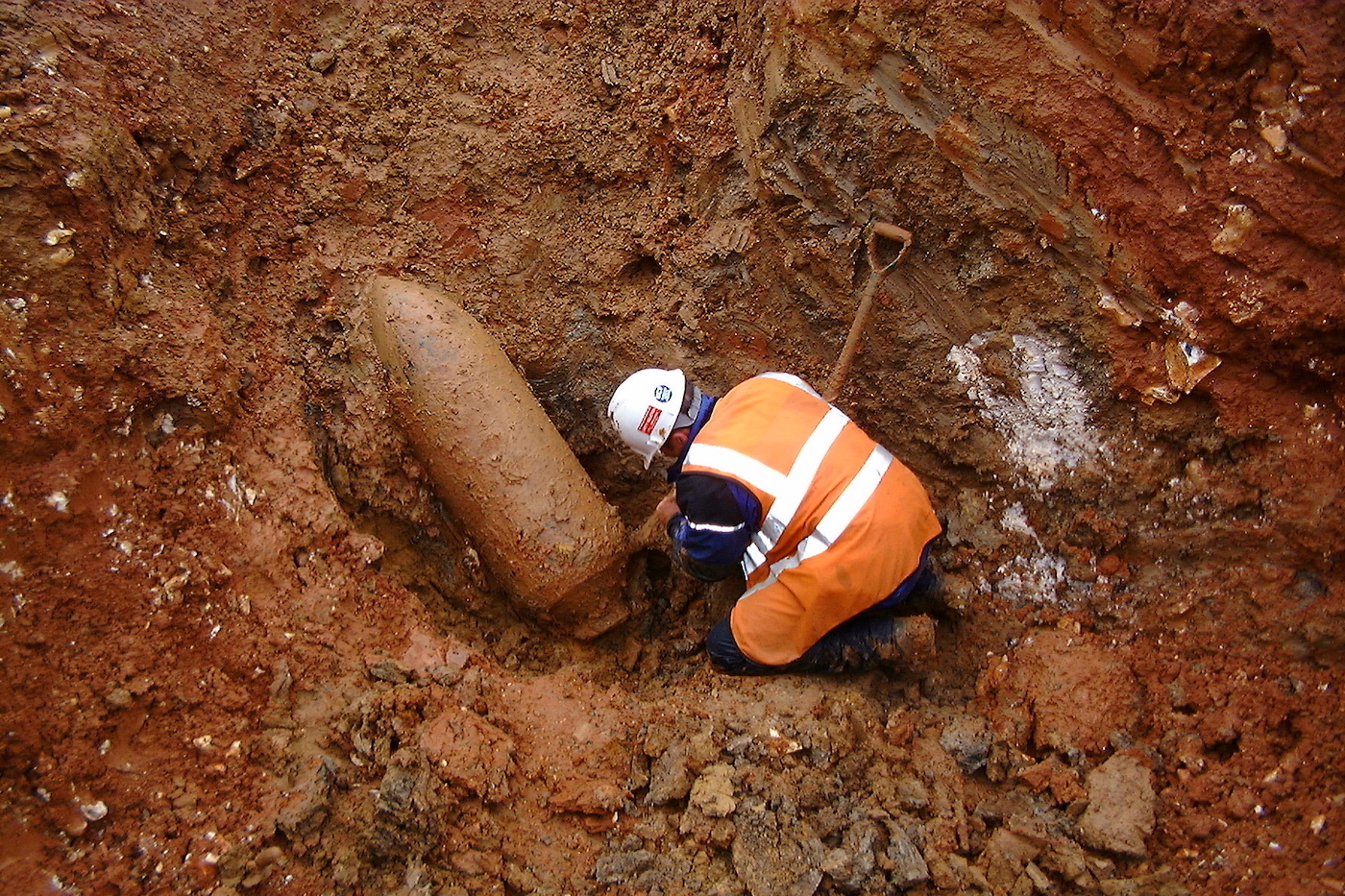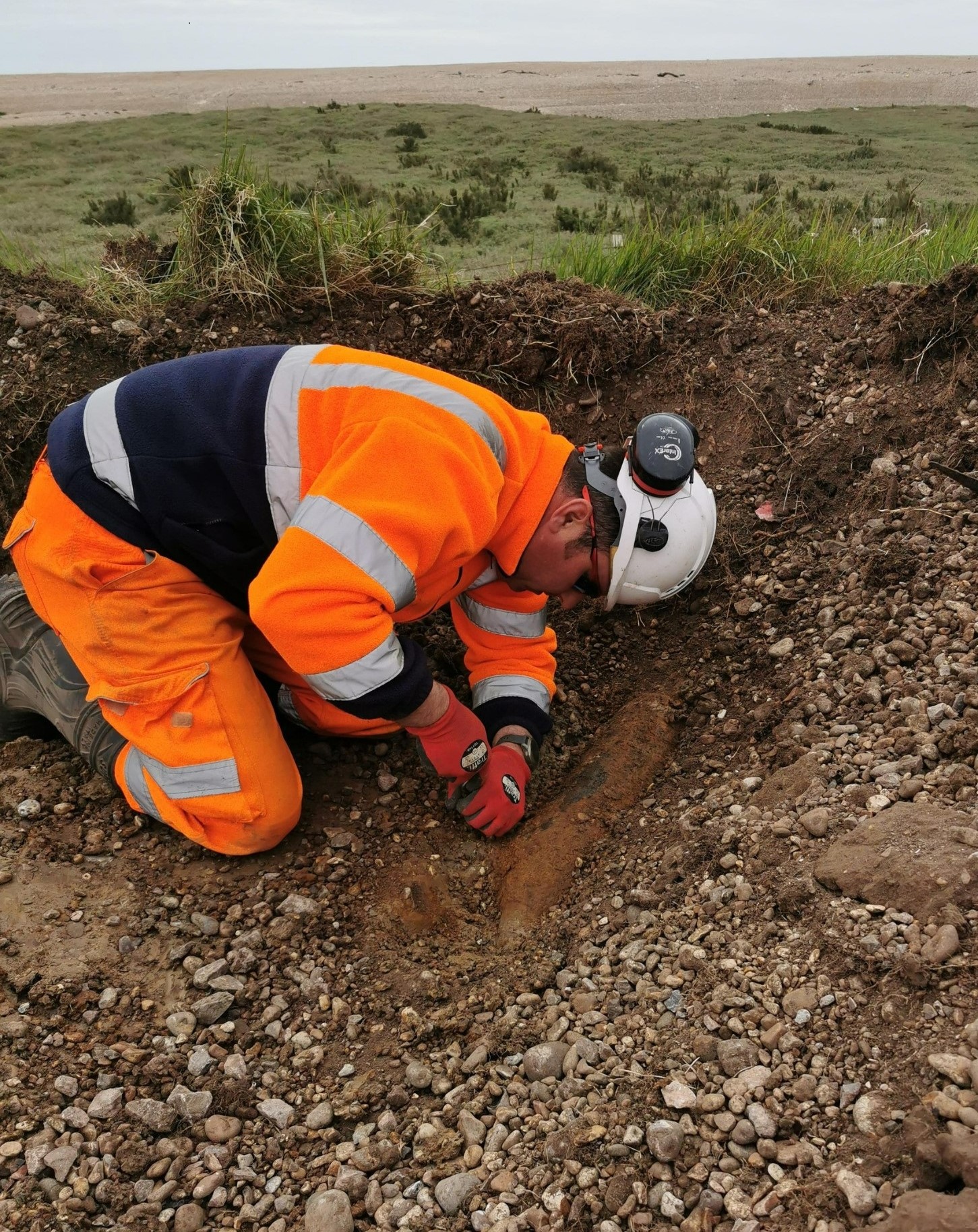Ordnance found in Shrewsbury
Unexploded Ordnance (UXO) has been found in Shrewsbury three times in three weeks. Why is Shrewsbury facing this contamination issue, and what can be done about it?
Why has ordnance been found in Shrewsbury?
As reported in the Shropshire Star, ordnance has been found in Shrewsbury three times in as many weeks – but why? To understand the contamination and the scale of the problem, it’s important to look back at the town’s strategic military importance – which dates from 1877.
Shrewsbury’s Copthorne Barracks
Shrewsbury was chosen by the War Department as a central location for a new barracks with construction beginning in 1877. Completed by 1881, the resultant military facility included a hospital and married quarters, stabling and stores and was named Copthorne Barracks.
The facility was actively used by the Army until 2014 when parts of the site were sold off. In 2016, planning permission was granted before Bellway Homes purchased the wider barracks site in 2018, gaining permission to clear all but the 19th century keep ahead of the construction of over 200 houses.
Subsequent clearance and construction works on Bellway’s Copthorne Keep development have resulted in the discovery of ordnance.
Where does Shrewsbury’s ordnance originate from?
As the Copthorne Keep site is located in a predominately residential area of Shrewsbury, surrounded by properties and gardens, residents living in the vicinity have been wondering whether what’s been found is live, perhaps dates from WWI or WWII and whether there is a wider risk to the community, so let’s examine Shrewsbury’s ordnance contamination origins.
Was Shrewsbury bombed in the war?
At the start of WWII, the Luftwaffe planned to destroy key military installations across the UK, including RAF airfields and Royal Navy and Army bases. After the Battle of Britain, the German’s tactics were modified to include attacks on both economic and industrial sites too. Their targets included dock facilities, railway infrastructure, power stations, weapons manufacturing plants and gas works.
Whilst Shrewsbury suffered a low bombing density during WWII, because the town and wider county were home to several camps, defensive positions and even a Spitfire factory, it was targeted because it did contribute to the industrial and military output of the UK.
Also, anecdotal evidence suggests the Luftwaffe often passed over Shrewsbury on their way to more opportunistic targets such as Liverpool. Then, between March 1942 and June 1943 the Luftwaffe began a strategy of nuisance raids, where small formations of fighter-bombers would cross the English Channel to attack targets such as railway infrastructure, gas works, power stations, harbours, bridges, and other random civilian targets.
Home Office statistics indicate that the Municipal Borough of Shrewsbury sustained 7 HE bombs, totaling 0.9 items per 1,000 acres.
It’s widely accepted that circa 10% of the Luftwaffe’s air dropped ordnance failed to detonate. Much lies undiscovered to this day - on land and in marine environments such as rivers, ports and harbours. The discovery of this ordnance still halts construction projects across the UK every year, and on sites where the risk is low, such as Copthorne Keep, a full survey for unexploded ordnance is unlikely to be commissioned.
In the UK, whilst there are health and safety guidelines and even a dedicated set of rules constructors and infrastructure companies should follow to ensure thought is given the risk of encountering ordnance called CIRIA C681, there is no law that legally binds anyone to even undertake a desktop, theoretical study of anecdotal evidence to determine a site’s risk level.
What is the ordnance that’s been found on the Copthorne Keep construction site?
Despite the fact Shrewsbury was bombed, the items found on the Copthorne Keep site are likely linked to its former use as a military facility because it was not air-dropped ordnance that was found, but rather land service ammunition.
Following such a cluster of finds, it’s likely further examination of the site will follow. Alternatively, a watching brief could be provided. This is a service whereby an explosive ordnance disposal engineer is always on hand to identify suspicious items as dangerous, inert, or not ordnance. This saves construction workers time because, rather than going on standing whilst waiting for the bomb squad to attend and examine anything unusual, an immediate identification can rule something in or out – and where it is ruled out, works can continue.
Just down the A49 in Shropshire’s neighbouring county town of Hereford, regular ordnance finds are discovered on the former munitions site in Rotherwas where development and redevelopment of what is now an industrial park ensures the bomb squad are regularly called in!
Low risk doesn’t mean no risk
Herefordshire headquartered explosive threat mitigation company Igne tries to encourage all constructors, infrastructure workers, council planning departments and even architects to consider the risk of unexploded ordnance ahead of any intrusive ground (or marine sited) works.
Igne’s Research Manager Emily Damerell explains why: “the UK was extensively bombed during the world wars but contributing equally to the contamination that remains and affects our land and waterways in Britain is the fact so much of our nation has been used for military training and manufacturing purposes. At best it’s naïve to assume a site won’t be contaminated. And even when we do a risk assessment and tell our sagacious clients who commission us to ensure their sites are safe that theirs is a low-risk site – we must be clear that low risk doesn’t mean no risk. Where there is a lower risk of discovering ordnance, a watching brief is a great solution. Where there is a higher risk, we survey and clear and ensure works remain on time and critically, safe.”
Other articles of interest

Why is UXO still found in Rotherwas, Hereford?
Yesterday, a hand grenade was found in Rotherwas, Hereford. Why is unexploded ordnance (UXO) still found in Rotherwas, Hereford, over 70 years since WWII ended? Learn about Rotherwas' munitions factory, Luftwaffe bombings, and why UXO risk assessments are important for intrusive ground works.

What’s the value of UXO risk mitigation services?
What value do UXO services offer? What is the impact of UXO? Who does UXO effect? What do these services enable? Get all the answers here.


